| #30 | Philips Tele-Spiel 2201 (1975) |
|||||
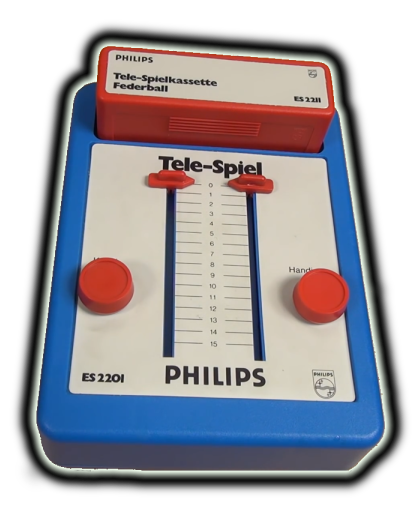 |
||||||
Going into this list I had no idea how much of a part the Dutch tech giant Philips had played in video gaming history, sure I knew of the failed CD-i, and I vaguely knew they were involved with the Odyssey 2 as well, but this company was actually involved with the creation of loads of different consoles right from the inception of the media! This particular console, the Tele-Spiel 2201 especially actually quite impressed me and I'd never heard of it prior to making this video. It was a cartridge-based console from 1975, so its one of the oldest consoles on the list and one of the earliest cartridge-based machines. The cartridges are akin to those of the original Odyssey & Video 2000 so there's no data in them, they just change the way the console behaves, but they somehow managed to get far more variety into the games than the competition who were also using this method. There's a crude shooting game and even a simple Speed Race style game, which was an arcade game made by Taito that had been popular in the mid 70s. Definitely one of the more versatile of consoles for its time. |
||||||
| ------------------------------------------------------------------------------------------------------------ | ||||||
| #29 | Tomy Pyuta Jr (1983) |
|||||
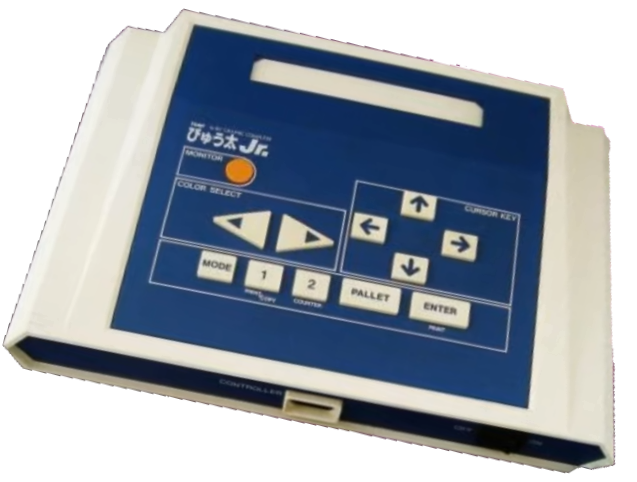 |
||||||
This was yet another Colecovision-a-like console, this time from the toy manufacturer Tomy. It was released in 1983 and was a console version of their earlier computer the Tomy Pyuta (which had actually gotten a release in Britain as the Grandstand Tutor). Much like most of the other consoles based on the hardware it was decently powered but now becoming somewhat unremarkable tech, and given the release date would quickly be outshone by the NES in Japan which was released just a couple of months later. Given that the console supported all of the computer line's software it did however have a good start straight out of the gate and grew a decent and fairly consistent library of titles. Though not very large in size the library includes a few moderately interesting games in it to bolster some of the bread and butter arcade ports, and as ever the TI chips do a perfectly fine job with the graphics. All in all it was pretty alright to be honest. It actually could've been a very good system for its time but it just didn't do enough to separate itself from the pack. |
||||||
| ------------------------------------------------------------------------------------------------------------ | ||||||
| #28 | Bally Astrocade (1978) |
|||||
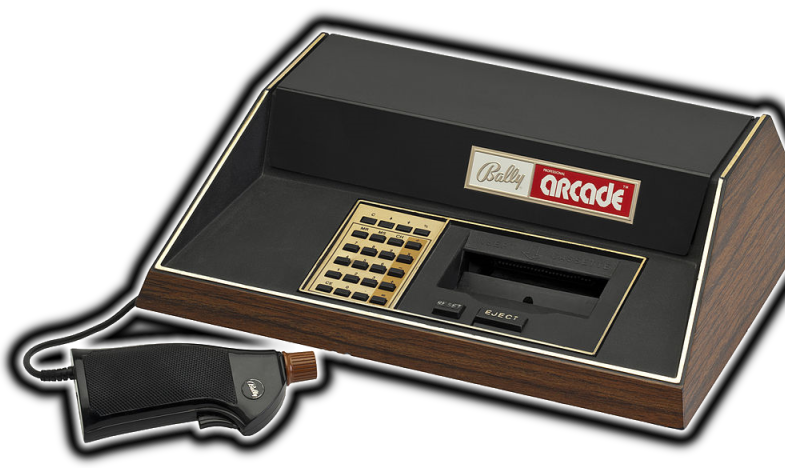 |
||||||
This was the original 4-player party machine! And unlike the more famous early four port console, the Atari 5200, this actually utilised them with a nice selection of 4-player games too. The Astrocade was a system from Bally that went up against the 2600 but was sold more in a premium market, being one of the most expensive consoles of all time. The system was in the same price ballpark as Neo Geo and 3DO notoriously would be in when launched many years later (though to be honest the comparison's not quite fair to the Astrocade as it was a different time and console prices in general were higher in the late 70s, but still, it was expensive by 70s standards, and super expensive by general console standards). As you'd expect from the price of it the hardware was also quite impressive for the time and could do a much better job at recreating the popular arcade games (like Pac-Man for example) than the 2600 could. However, whilst impressive the hardware reportedly failed at quite a high rate, with reliability issues plaguing the system to this day, and the lack of sales at the time also meant that the software library is quite small, albeit what it has is consistently of a high quality. The controllers for the system were interesting, they were handheld joysticks that I can only think to compare to the Wii's Nunchuck attachment, a single-piece gripped controller with a trigger button and a joystick on top. The joystick itself could also be rotated like a dial to play Breakout style games and such. The influence here was definitely the earlier Fairchild Channel F controller I think, which had a very similar shape and functionality to it, but Bally's implementation was much better. All in all a reasonable console. It was impressive for the time and it did offer some things that its competition did not, such as the 4-player functionality and more complex controller, its just a shame it was so pricey and unreliable. |
||||||
| ------------------------------------------------------------------------------------------------------------ | ||||||
| #27 | Atari 5200 (1982) |
|||||
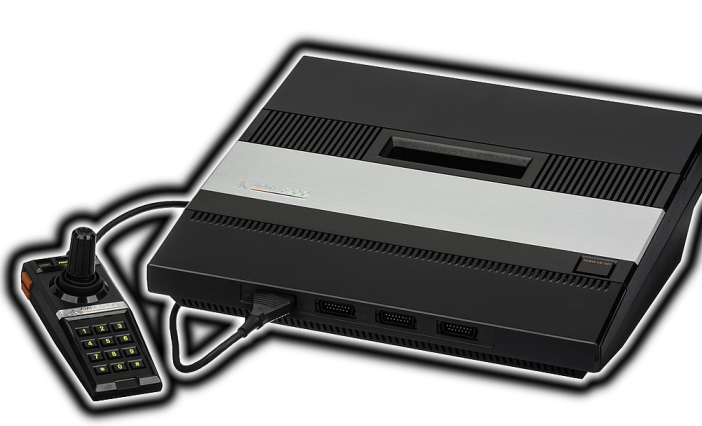 |
||||||
When I originally started forming this list, which must have been, oh, maybe a year ago now, the 5200 was actually a good bit higher placed than this. The system represented a major hardware leap above its predecessor the Atari 2600, with tiled multicolor graphics, hardware scrolling and a real soundchip. It could do the big arcade games of the time very well in a way that the 2600 just could not, and it even had some newer games of its own, more advanced and in-depth than those of the 2600. This however was my experience through emulation, very different to using a real machine as the main achilles heel of this system was always the controllers. I'd known for many years that the floppy, ineffectual joysticks of the 5200, which lacked self-centering, made for some inaccurate control, and that they were also notorious for being unreliable but hadn't realised just how bad they were. The experience of playing and owning one of these systems in the mid 80s was probably of, well, not playing it, as the controllers seemingly were always in a state of disrepair. There were third party offerings available at the time which alleviated this issue, but talking to the people who owned them themselves at the time, none of these options seem ideal. Some fans suggested the best fix at the time was the Masterplay Adaptor, which allowed you to use an original 2600 controller on the system, whilst others mentioned the 3rd party joysticks from Wico which self-centered, but the majority seemed to think it was best to actually buy both of those for different types of games, and learn to do a fairly simple, though temporary repair job on the official controllers yourself! This repair would get them working for a few weeks at a time before you'd have to do it again over and over! Of course nowadays all of this stuff is incredibly expensive and just not an option for the average retro gamer, but I'd imagine even buying it all at the time would be fairly costly. Its a great shame that for me, the Atari console with the second most competitive library of games for its time after the 2600 is crippled by its controllers but that's just the way it is. It was very nice hardware and the library was great too, and perhaps a dedicated and informed owner at the time could've gotten a Masterplay Adaptor and learned to fix the controllers, or better yet a Masterplay Adaptor, a Wico controller and learn to fix the controllers, but honestly what a ballache! The good news though is that this console was actually very much just a consolised version of Atari's 8-bit computer line. Pretty much every game released on it was on those computers and said computers just used generic Atari 2600 controller ports, often the games themselves were even on cartridges! So really its best to just forget this console ever existed and pick up one of those old computers if you want to experience this phase of Atari's history. I do wonder how much this atrocious situation with the 5200's controllers might have contributed to the subsequent video game crash of 1983, people often focus on the Atari 2600 and its glut of expensive shovelware as the main cause, but really, if you've decided to upgrade your console in 1982 and then spent a lot of money on a 5200 only to have your controllers fail within a month, leading to you buying more controllers which subsequently fail again and again until you ultimately give up and it becomes a doorstop, I think its understandable that you'd start to rethink your passion for gaming entirely! |
||||||
| ------------------------------------------------------------------------------------------------------------ | ||||||
| #26 | SG-1000 (1983) |
|||||
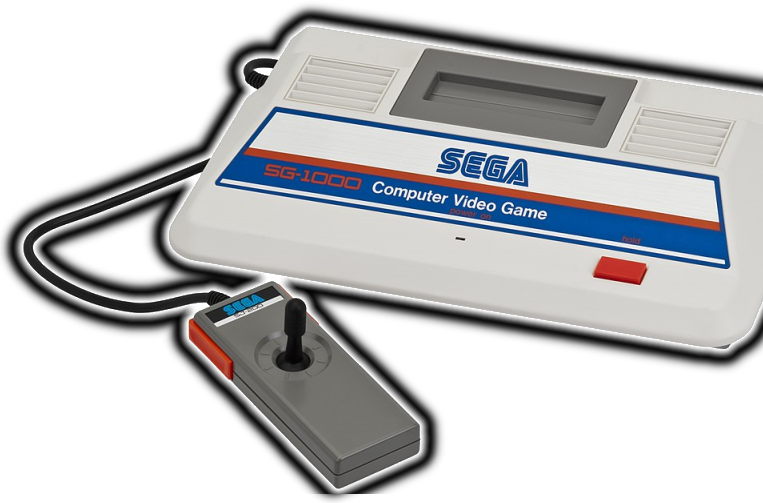 |
||||||
| Sega's often forgotten first foray into home consoles (yep you heard that right, the Master System was actually their second attempt at a home console). So as mentioned earlier, Japan's home console market was somewhat lagging behind the rest of the world during the early 80s, with many of the consoles available being 4 or 5 years out of date in comparison to what was going on in the US. Sega sought to end this situation by producing the SG-1000, a system that had hardware that was identical to that of the Colecovision. This would bring Japan much more up to date with the US and closer to recent events. Unfortunately for Sega though... Nintendo had decided to bring out their own console and had excelled themselves, designing it as a state-of-the-art games machine that could do their arcade hits justice, and they were set to release it on the same day as the SG-1000! Now taking one look at the games of the system and comparing them to those of the NES library probably isn't very flattering to the machine, but this is somewhat misleading as the SG-1000 was only really competing with the NES for a couple of years before Sega released their true competitor, the Master System, so the only types of NES games which were around at the time were things like Donkey Kong and Popeye and the like, with second year titles like Xevious and Excitebike being pretty much the most impressive NES games available then. One lucky break for Sega was that Nintendo had chosen to block 3rd party developers during those early days, only slowly opening up the console to third party support over the coming 2-3 years. As a result the SG-1000 had quite a comparably sized library while the two were competing and was only really obliterated from around 1985 onwards. The SG-1000 was a likeable console that got decent support during its short lifespan, with games even being released up until 1987. In general most of the popular genre's of the time were represented, and it had some ports of Sega arcade games not released anywhere else on it, such as Star Jacker, as well as a game called "Girl's Garden", which was the first title made by the creator of Sonic, Yuji Naka. Like most of the Colecovision-alikes unfortunately this does not support Colecovision games, there was however another identical system in Japan called the Othello Multivision and it will play the games of that system, which include a port of Q-bert. |
||||||
| ---------------------------------------------------------------------------------------------------------------------- | ||||||
| ---------------------------------------------------------------------------------------------------------------------- | ||||||
| #25 | Atari Pong (1975) |
|||||
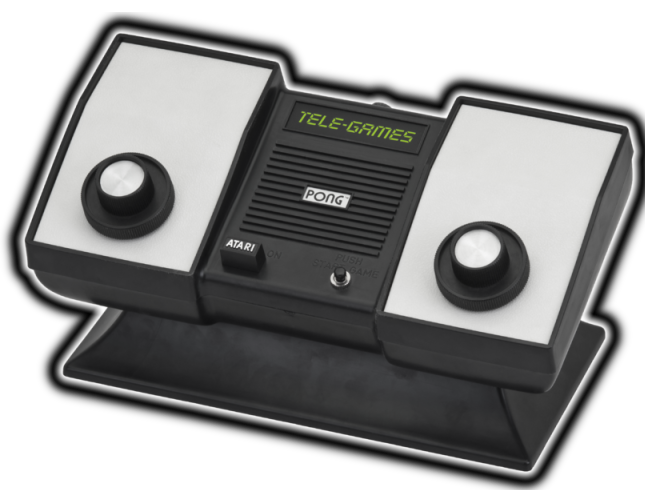 |
||||||
Ah, Pong! The first ever video game to achieve mass market success. Prior to pong, video games were usually only played by computer nerds using incredibly expensive and unwieldy machines in universities, but with the release of Pong video games really entered the public consciousness, first in the arcades, and then later with this home release version of the game. This was very, very polished by the standards of the time, it played great and the presentation values, with that iconic and memorable multicolour display effect, were excellent too. So why you may ask is such an important machine not higher? Well in reality this wasn't actually the first home console, it wasn't really even the first pong in the home in many ways as the game of Pong had been kind of an update made by Atari of a previous Ping Pong game for a home console made by another company, Magnavox, that had never achieved much popularity. Atari had taken that electronic Ping Pong game and then added scoring and other game play tweaks to make it play better, and then released it as Pong in the arcades to lots of success, that original console is still yet to come... |
||||||
| ------------------------------------------------------------------------------------------------------------ | ||||||
| #24 | Fairchild Channel F (1976) |
|||||
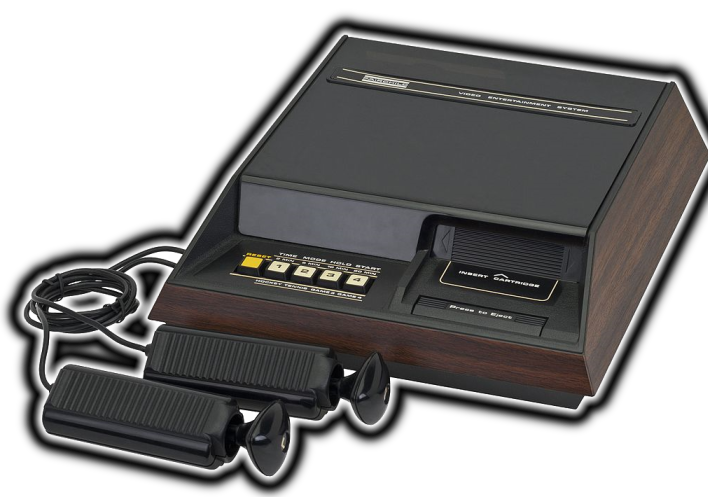 |
||||||
Here we have the first ever console to have interchangeable ROM cartridges, beating the Atari 2600 to market by nearly a year. Now as mentioned earlier some of the 1st gen consoles did sort of have interchangeable games, but none of them actually held information on the game itself that was read by a console's CPU, not until the Channel F. This cartridge system had taken Fairchild quite a while to work out all the kinks, it was inspired by the already common practice of manufacturers slotting memory chips into a motherboard, but the developers of the machine knew that consumers couldn't be expected to take their machine apart and slot these little chips in and out every time they wanted to change games, apart from how tedious that would be the chips were not built to be constantly plugged and unplugged and would be damaged over time. The Fairchild's creators came up with a much more reliable and durable way of implementing the system, as well as one that was intuitive enough for consumers to get to grips with easily. One of their staff who had been working in this area was then subsequently poached by Atari to help with their own cartridge system. Outside of the cartridges the controllers are also really interesting and innovative, they have a lot of functions. As I touched on in the Bally Astrocade entry these were kind of like the Wii's nunchuck attachment, but with a joystick that could also be rotated left and right and pushed in and pulled out for two different fire buttons. So this had an awful lot of functions in comparison to most of its competitors for the time and it was put to good use in many of the systems games too, its version of Pong for example allows you to angle the bats, and in its version of Tank Combat you can not only move around the screen but also angle you turret in different directions. The library is admittedly quite small with only a few key titles, but I find the console and its controllers to have some charm, and kick starting the 2nd generation and its explosion in game variety is kind of a big deal and definitely cements its placing in the top 25. |
||||||
| ------------------------------------------------------------------------------------------------------------ | ||||||
| #23 | 3DO Interactive Multiplayer (1993) |
|||||
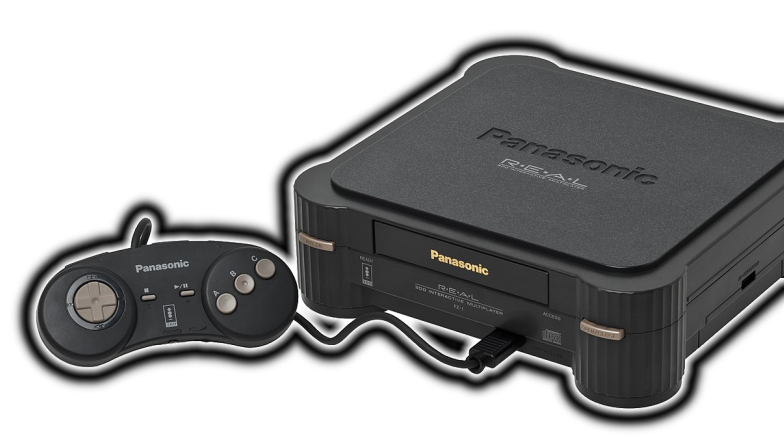 |
||||||
The 3DO is an often maligned console that was made by EA founder Trip Hawkins, who, with the 3DO hardware had aimed to create an industry standard console design that could be leased out and manufactured by a variety of different electronics companies. Basically he wanted the video game market to be structured more like the film and music markets so that consumers wouldn't need to buy different consoles to play different games, as all available consoles would follow the same standard. Unfortunately for Trip his dream was not to be and the only thing his console ended up being famous for was its very high price of around $700, which is closer to $1200 today when taking into account inflation. Sadly this was due to the market model Trip had laid out, usually consoles are sold as a loss leader and money is made back on the games, but given that 3DO's were being manufactured by companies that had no history of making games and whom were not collecting royalties either they could not sell them at a loss. The price did drop after a while and actually by the time the PS1 and Saturn were out the 3DO was effectively a cool little budget console, but by this stage all momentum for it was gone and it was destined for the great console game room in the sky. The 3DO was actually quite an impressive system for its era and unlike many of its contemporaries actually did a pretty good job of predicting the way the market would go, with its hardware ethos really not being a million miles away from the direction that Sony would go with when releasing the Playstation a year later. Though of course not as powerful a machine it still handled textured polygons decently and at least correctly chose the CD format over cartridges too. The system also had a few innovative ideas too, every controller for example included a joystick port in the joypad itself! This meant that out of the box the console could support 8-player games without the need for a multi-tap, with the controllers all daisy-chaining off each other in sequence. The other nice inclusion with the controllers was each one having a standard headphone jack and volume dial included in the bottom of every joypad, this was a cool feature at the time and was missing from subsequent consoles for years afterwards before making its return when the PS4 was released in 2013! The software library is quite large and varied but there's a lot of shovelware, still, there were a bunch of good games from EA, Crystal Dynamics and even the 3DO company themselves which graced the system, many of which would end up being ported to the big guys later on, with the 3DO being used as a sort of early training ground for when the major consoles would later turn up. There were also many PC ports on the 3DO, and actually the 3DO was one of the only consoles that really represented this early era of PC games, with ports of PC titles like Alone in the Dark and Star Control II. So what do I think of it overall? well I think its quite an underrated system to be honest, not that I think its great or anything, this is a console I would only just consider breaking into the "alright" tier but certainly its not deserving of all the hate its gotten over the years. In fact the industry feeling at the time was actually lukewarm, with the feeling being that it was an okay console that was too expensive and took too long to get going, I think during the early days of Youtube, channels like Gametrailers really did a number on the 3DO with their "worst consoles" lists and such, and it was then that the public perception really soured on the system. Thankfully I feel that this is coming to an end now and the 3DO is starting to be viewed in a slightly more positive light again. |
||||||
| ------------------------------------------------------------------------------------------------------------ | ||||||
| #22 | MB Vectrex (1982) |
|||||
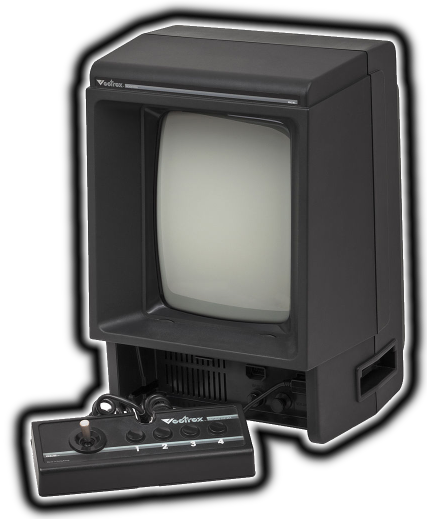 |
||||||
Now this is definitely one of the most unique consoles ever made! Most of the home consoles of the Vectrex's time were focused on 2D sprite based graphics but the Vectrex did something completely different and went with an early form of 3D graphics that plotted out lines on the display to create simple geometric shapes, this was a much smoother method for displaying 3D than what other consoles of the time had available. These types of Vector-based games had often been popular in the arcades with games like Battlezone and the then soon to be released Star Wars Arcade game, so it made sense that some industrious person would attempt a home console primarily created to play these types of games, and with the Vectrex they did an admirable job. Due to the vector graphics the machine had to include its own screen and as such ended up being a tabletop console, it wasn't really that portable though as it didn't take batteries and as such had to be plugged into the mains. The display was black and white but each game came with its own colour overlay that you placed on the screen to give it the appearance of colour, which works decently. On top of the interesting 3D focus the Vectrex also had a very notable controller, a joypad that included a self-righting analogue thumbstick that was very, very similar to the one which would adorn the N64 controller a decade later, and which would become an integral part of the way 3D games would come to be played. Here however, sadly the analogue stick is very much under utilised, with no games really taking advantage of it, in fact in my experience many owners of the system didn't even know the joystick was analogue, so little was it used in the games. And where it comes to the games themselves? The library is not really all that big, with only some 28 odd games made for it. Unfortunately the Vectrex never really took off in a big way and soon after it was launched the US was going through the video game crash and businesses were going bankrupt left, right, and center. Thankfully what is here is very consistent and diverse for the time with very few duds though so there was a decent amount of fun to be had with the system. |
||||||
| ------------------------------------------------------------------------------------------------------------ | ||||||
| #21 | Odyssey 2 (1978) |
|||||
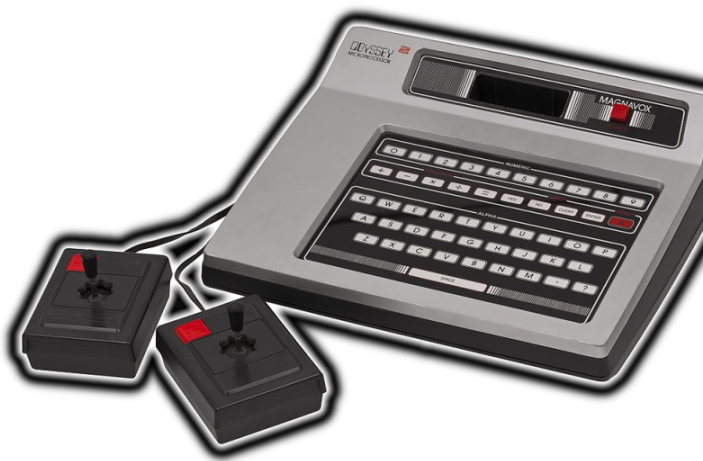 |
||||||
Shortly after creating home video game consoles with the original Odyssey, Magnavox was bought out by the electronics giant Phillips, who would release a successor, the Odyssey 2 (or Philips Videopac G7000 as it was called in Europe), this time the console would become a mild success. This is an underrated little machine I think, out of these pre-Intellivision consoles this was definitely the one that gave the Atari 2600 the biggest run for its money, it was cheaper than the 2600 and its hardware had a very different design ethos with different strengths and weaknesses too. Though not as versatile as the 2600 (it was crazy how much untapped power that thing had) it was quite adept at putting a lot of moving objects on the screen without flicker for example, which was something that the 2600 often stumbled with. One thing I like about this console is that its game library really had its own flavour, the US boxes for the games are very memorable and quite iconic with their neon colours and tron-like designs, but the library itself also had a personality of it own which few console outside of the 2600 could say during those early days. Like many other consoles of the time the Odyssey 2 would be full of ports of the most popular arcade games, but every time this was done on Odyssey the programmers gave the game their own spin, which often drastically affected the way the game played. Its version on Breakout for example had a 2-player competitive aspect where one player destroyed the bricks whilst another tried to rebuild them, whilst its Space Invaders gave the aliens their own shields and had you re-armouring from your bases when taking a hit. The main game for the Odyssey 2 though was its take on Pac-Man, a game called K.C. Munchkin. Pac-Man was one of the hottest games at the time and Atari had totally fumbled the ball with their port, delivering a poorly balanced version of the game that was ugly and full of flicker, whilst Magnavox had hit the ball out of the park with their highly polished and playable maze game. K.C. Munchkin was somewhat different to its main inspiration, the dots were no longer as numerous as before and they actually moved around the screen, but it still retained much of Pac-Man's playability. Even more notably for such an old game was that it came with its own maze editor, so the player could design their own courses to play in! This game alone grew the system's popularity immensely and got it noticed by the public, leading to it getting shut down by Atari with them claiming it infringed their copyright (unfairly I would say as I feel they changed the game more than enough). |
||||||
| ------------------------------------------------------------------------------------------------------------ | ||||||